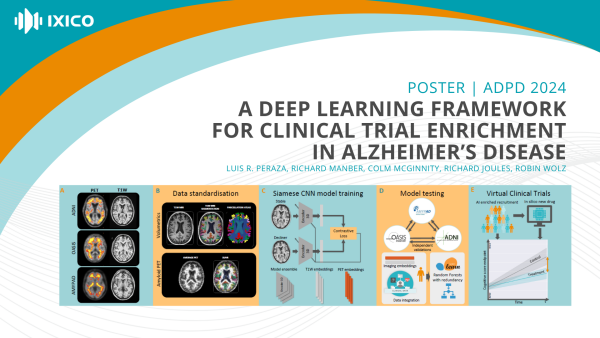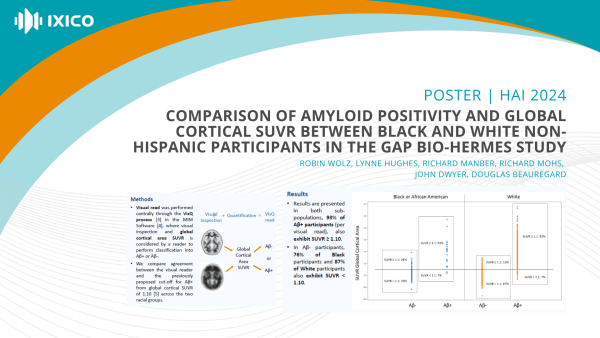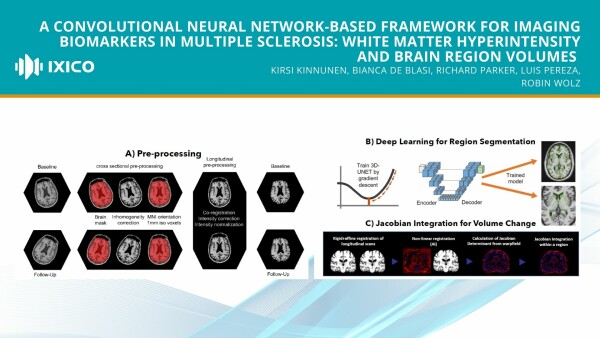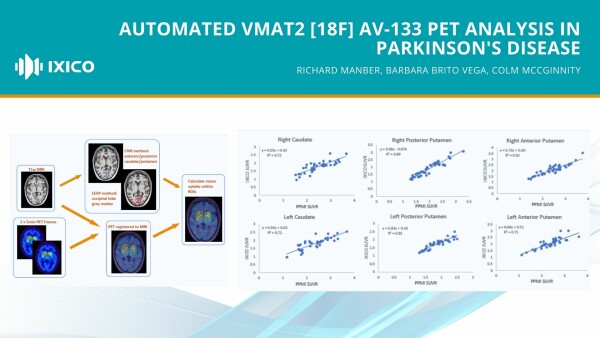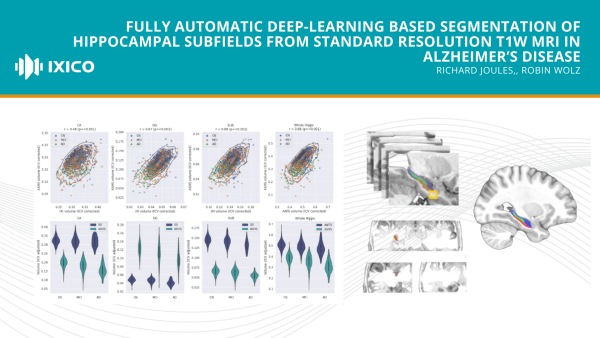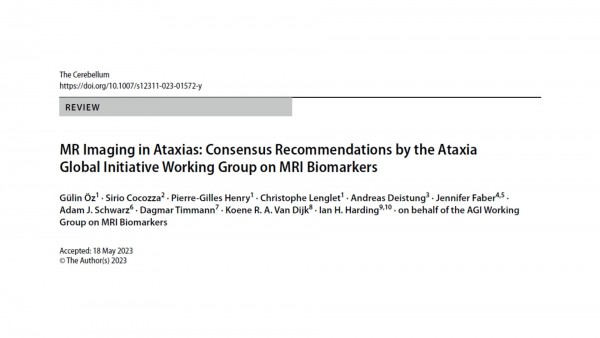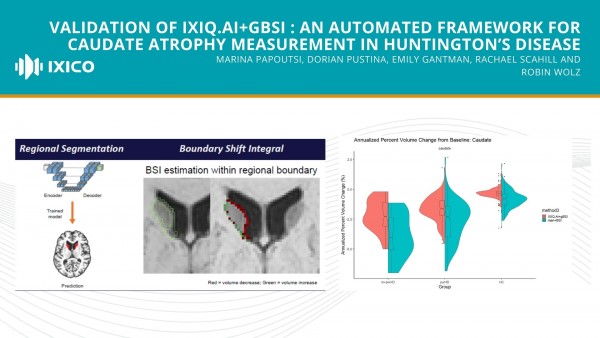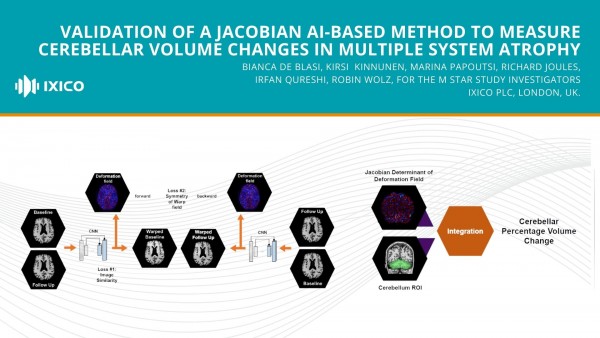Scientific Publications
Recent Scientific PublicationsA Deep Learning Framework For Clinical Trial Enrichment in Alzheimer’s Disease
The selection of participants at risk of cognitive decline in clinical trials, known as trial enrichment, increases the probability of trial success. It is estimated that by 2050, 153 million people worldwide will be living with a type of dementia. Hence, innovative trial recruitment strategies are necessary to accelerate treatment development.
Comparison of amyloid positivity and global cortical SUVR between black and white non-Hispanic participants in the GAP Bio-Hermes study
Summary: This poster shows our further investigation on the amyloid PET differences between Black and White participants in the GAP Bio-Hermes study and to better understand the relationship between Aβ+ status from visual read and quantitative SUVR.
A convolutional neural network-based framework for imaging biomarkers in MS - white matter hyperintensity & brain region volumes
Summary: We developed and validated scalable and robust methods for automated volumetric analysis of brain white matter hyperintensities (T2 lesions) and regions of interest in multiple sclerosis.
Automated VMAT2 [18F] AV-133 PET analysis in Parkinson's disease
We discuss our latest work to evaluate a fully automated image analysis pipeline to process vesicular monoamine transporters type 2 (VMAT2) [18F]AV-133 tracer positron emission tomography (PET) images, by comparison with a methodology requiring manual intervention.
Fully automatic deep-learning based segmentation of hippocampal subfields from standard resolution T1W MRI in Alzheimer’s disease
Here we train an AI method to segment the hippocampus into subfields (CA1-3 CA4+DG, and Subiculum) from standard resolution T1W MRI alone to assess utility as biomarkers compared to whole hippocampal volume, in the absence of a high-resolution T2 MRI.
MR Imaging in Ataxias Consensus Recommendations by the Ataxia Global Initiative Working Group on MRI Biomarkers
As members of the Ataxia Global Initiative (AGI) MR Biomarkers Study Group that authored the paper Kirsi Kinnunen and Niccolo Fuin hope that these guidelines on harmonizing MRI data acquisition will be helpful for ataxia study sponsors.
Validation of IXIQ.Ai+gBSI : an automated framework for caudate atrophy measurement in Huntington’s disease
We have developed a fully automated framework that uses deep learning for caudate segmentation (IXIQ. Ai) and generalised BSI (gBSI) for longitudinal measurements. Here, we validate the new method by comparing its volumetric scores with those of the standard manual pipeline (Man+BSI). Man+BSI produced larger caudate volumes than IXIQ.
Validation of a Jacobian AI-based method to measure cerebellar volume changes in multiple system atrophy
The accurate, consistent, and scalable estimation of cerebellar atrophy would be highly beneficial for clinical trials in multiple system atrophy (MSA)1-3.
9-16 of 44 results
